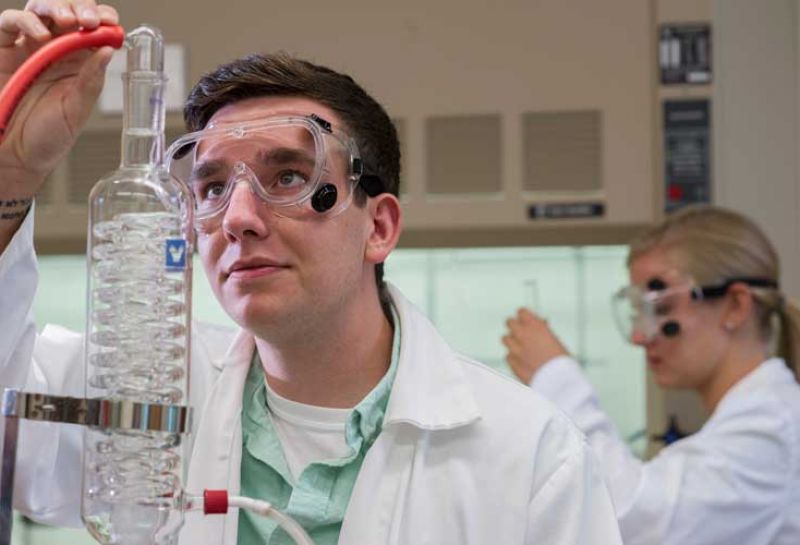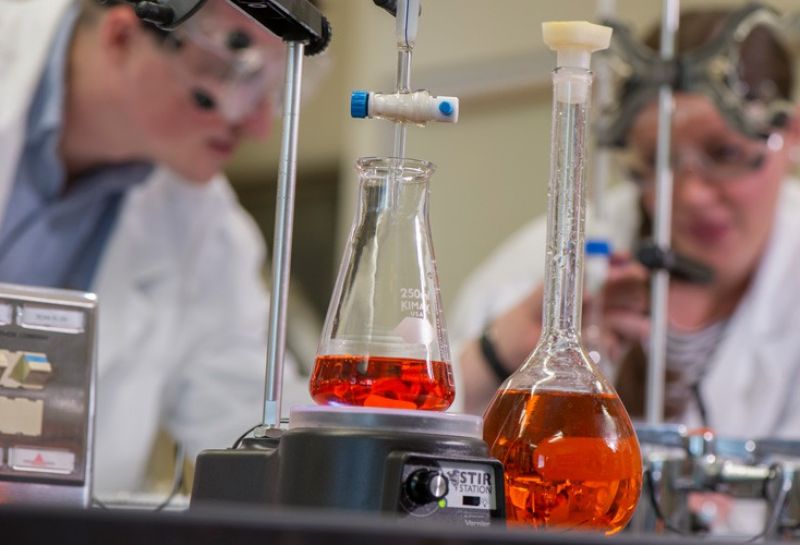Thanks to the Bordeaux-Howald Research and Instrument Fund and other donors, our instruments have been carefully chosen to be student-friendly and to represent a range of analyses encountered in both industry and research. Chemistry majors at Huntington have the advantage of being mentored in the operation and maintenance of these instruments.
- The Anasazi Fourier Transform nuclear magnetic resonance spectrometer (FT-NMR) allows students to solve structures of molecules containing hydrogen and carbon. Understanding how the instrument functions also allows students to better comprehend the related technique of magnetic resonance imaging (MRI) in medicine.
- The Shimadzu QP5000 gas chromatograph – mass spectrometer (GC-MS) is an industrial-type instrument which allows students to separate, quantify, and identify components of volatile mixtures with the aid of electronic databases.
- The Fourier transform infrared spectrophotometer (FTIR) (Mattson Galaxy 2020) allow students to identify molecules based on “fingerprint” spectra that they generate when they absorb infrared radiation. Accessories allow students to use the technique to identify materials in many different forms including powders, gases, liquids, fabrics, and adhesives.
- The UV-Visible spectrophotometers (Perkin Elmer Lambda 35 and Vernier) allow students to quantify the concentrations of colored substances or substances that absorb UV radiation.
- The fluorescence spectrophotometers (Vernier) measure the fluorescence of materials which glow under UV light, such as chlorophyll or fluorescent biological molecules.
- The SRI 8610C gas chromatograph (GC) allows students to separate components of mixtures with low boiling points. This modern workhorse instrument allows students to practice their sample injection techniques and “tinker” with the instrument.
- The Pine WaveNow potentiostat allows students to measure the concentrations and oxidation states of metals and other substances using electrodes immersed in solution, through techniques such as cyclic voltammetry (CV).
- A laser polarimeter allows students to observe and quantify the rotation of light caused by optically active substances such as certain pharmaceuticals.





